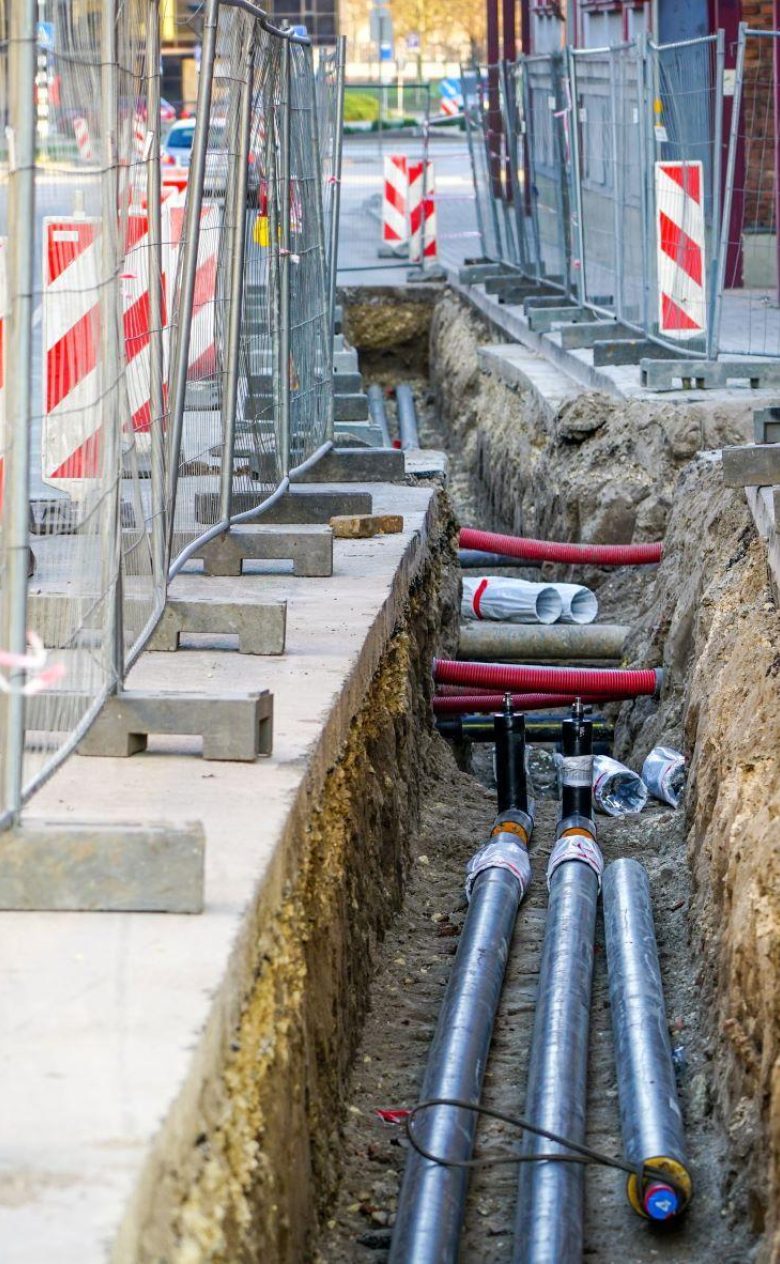Heating and cooling networks for a carbon-free built environment
Heating and cooling networks help existing homes, business parks and campuses to disconnect the gas supply. Deltares supports heating companies, building managers and governments with the knowledge and tools needed to become more sustainable by using sustainable heat sources better. This fits in with the climate ambition of disconnecting 1.5 million homes from the gas supply by 2030, a target that has to be met because heating and cooling cities, residential areas, industrial areas and buildings account for about 50 percent of global greenhouse gas emissions.

Deltares is committing to a carbon-free environment with, among other things, an innovative concept for solar heating networks. Our monitoring campaign in 2022 in the WarmingUP project demonstrated that the temperatures needed in existing homes are much lower than previously assumed: 70 degrees or lower, instead of 90 degrees, would seem to be feasible for virtually all homes. And even temperatures of 55 degrees are enough for 60% of existing homes. That is getting closer and closer to the desired 50 degrees for post-war housing. Lower temperatures mean that large numbers of existing homes can be connected to a heat pump. A heat pump of this kind can use a heating-cooling network, a ground loop or the outside air as a source.
All this exceeds expectations, and it is needed to achieve the goals of the climate agreement. The thinking in the Netherlands in that respect is that at least 40 to 50% of existing homes will have to be connected to heating and/or cooling networks. That was the case in only 7% of homes in 2022. So a six- to sevenfold increase is needed.
In our Dutch WarmingUP projects, we are demonstrating that we can build many more low-temperature networks and switch existing networks to mid-temperature operation. Those networks can be supplied with sustainable heat more easily because the lower the temperature, the more sources are available. And the smaller the losses in the heating networks.
One of the challenges facing the roll-out of heating networks is building them in existing residential areas. We are therefore developing smart construction methods in close collaboration with market participants in order to reduce inconvenience.
Solar heating networks: innovative concept for residential areas with large numbers of roofs
With the construction of a solar heating network in the Ramplaankwartier district in Haarlem, we are working on a carbon-free built environment. As a partner in a consortium, we have received a subsidy for this initiative. In 2024, we will start building a solar heating network for 600 homes, half of the total number. This is the first area in the world to install a heating network of this kind. It is a completely new concept for existing residential areas that do not have easily accessible sustainable sources nearby such as geothermal or large amounts of water. However, if the roof area is adequate, as with many terraced houses, the approach can work.
Our newly developed heating concept hardly takes up any additional space and it is therefore efficient. The approach is as follows: PVT panels are installed on roofs to produce heat and electricity. The gas boiler is replaced with a heat pump, a tap water buffer and a smart delivery system. A low-temperature distribution network is installed in the streets to transport excess heat in the summer to a seasonal store and retrieve it in the winter.
Control concept for heat networks combines hydraulics, heat transport and design knowledge
Our input for this concept is that we store the heat from the panels in the summer in an aquifer thermal energy storage system in the ground because it does not need to be used immediately. In the winter, that heat goes to the heat pumps that heat the homes. The strength of the innovation is in the design of the heating and cooling network, and the design of the delivery system, which draw on our years of in-depth expertise with control concepts. Hydraulics and design knowledge with all kinds of mains networks come together here.
This solar network can be designed reliably with our WANDA simulation tool. WANDA is software developed in-house that has been extensively validated and that has been used in the water and energy sectors throughout the world for 25 years.
Over the years, we have continuously added new functionalities to the software. The development of ATES is dynamic and new applications are constantly emerging. Take, for example, the control systems for solar heating networks. They are more complicated than a conventional heating network.
More focus on system integration, sector linkage and data-driven control and management
With lower temperature levels from renewable sources, the coordination of heat production, heat distribution, storage and delivery is very important for the proper functioning of sustainable heating networks. This integration in the heating chain imposes stricter demands on the design, acceptance testing and regulation of heating networks. The increasing amounts of operational data from smart meters are providing more and more opportunities to optimise the control of heat networks and to offer thermal comfort as a service. We can support these activities with our tools, such as WANDA and RTC Tools.
The increasing use of central and local heat pumps is also creating opportunities to accommodate variations in the availability of solar and wind energy in heating systems: storage in heat costs only a fraction of battery storage. We are here to support all stakeholders who want to exploit these sector links so that we can work towards an intelligent, integrated and affordable energy system.
For the management of existing heating networks and other underground mains infrastructure, such as water and gas mains, we are developing risk-based methods to estimate residual life. Methods are also being developed for leak detection and performance monitoring that increasingly combine a range of public and company-specific data sources.
International challenges: the seasonal storage of heat, cold and aquathermal energy is sometimes prohibited
Countries outside the Netherlands also need more heating networks in order to disconnect buildings from the gas supply and make them more sustainable. The challenge is therefore the same as in the Netherlands. The solutions will sometimes be slightly different but we expect that low-temperature and ultra-low-temperature heating networks are likely to be the cheapest solutions in the long run in an increasing number of countries.
However, unlike the Netherlands, where seasonal subsurface storage is highly developed and primarily suitable for connection to a low-temperature heating network, this approach is prohibited in many countries. This cuts off sustainability options. In addition, with climate change, demand for cooling is rising sharply. The storage of aquathermal energy and surplus heat in the subsurface is needed to supply heat and cold efficiently.

